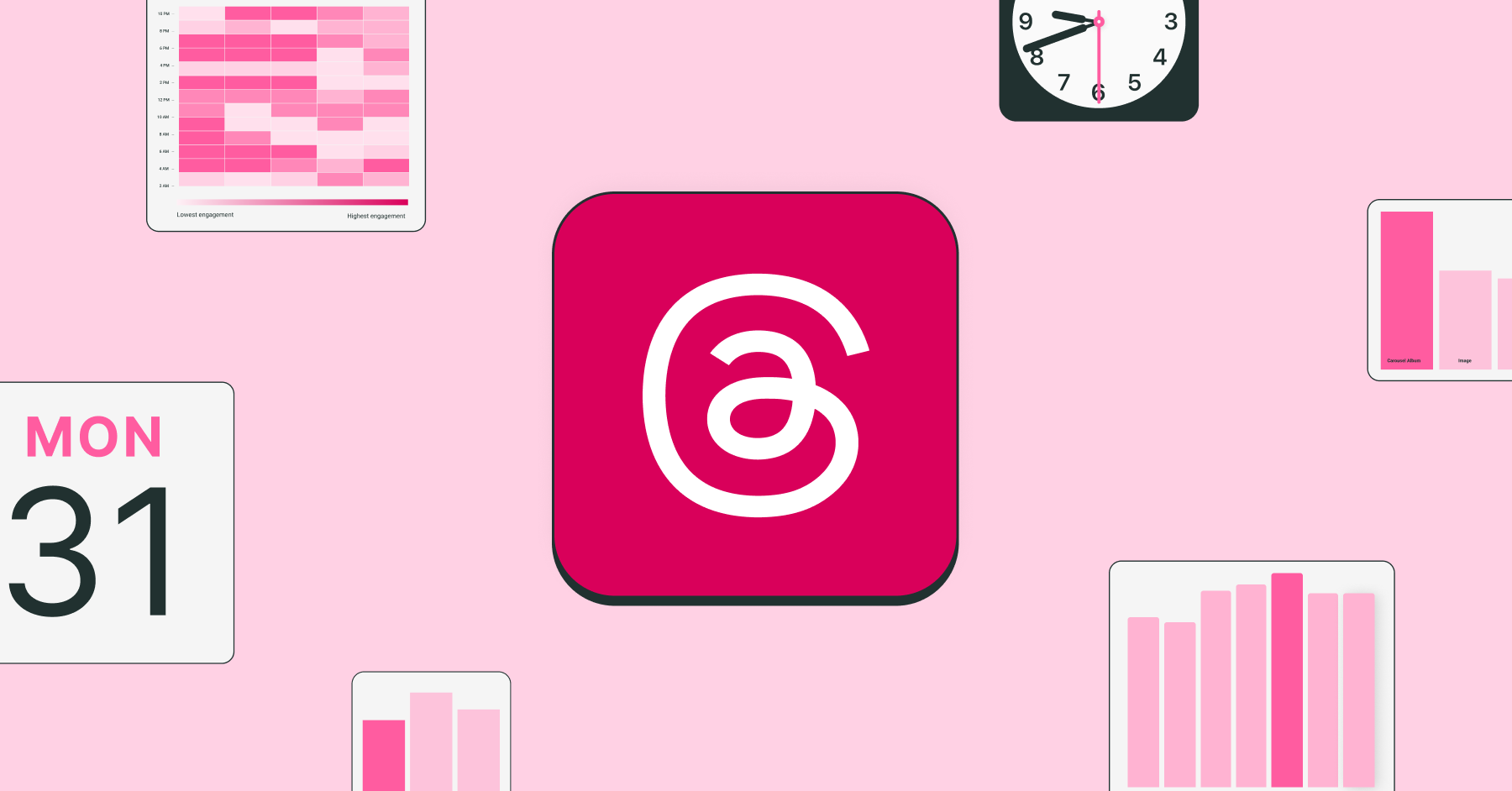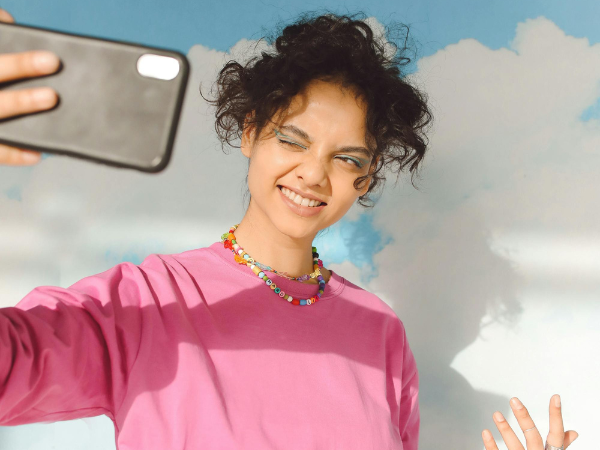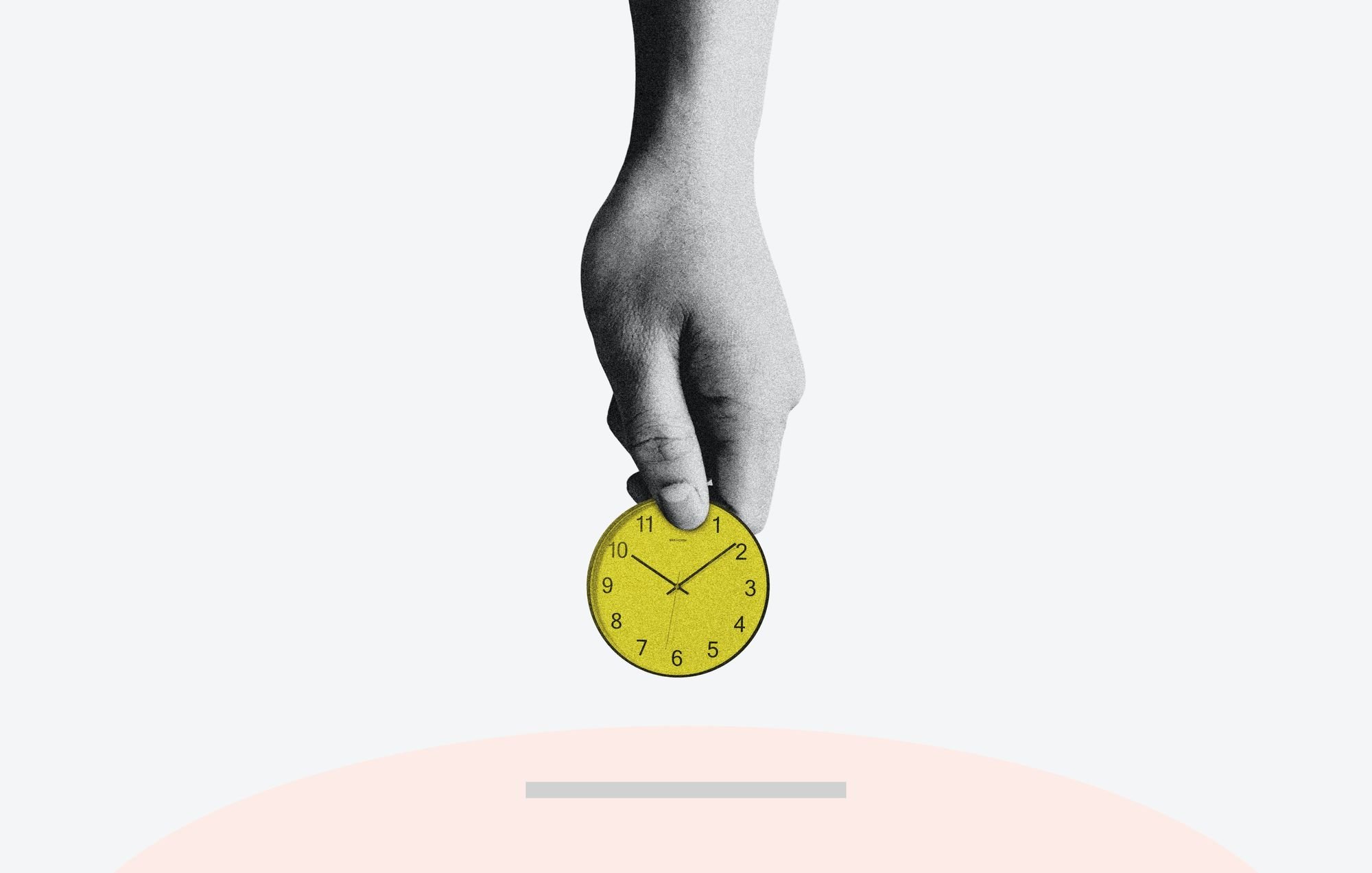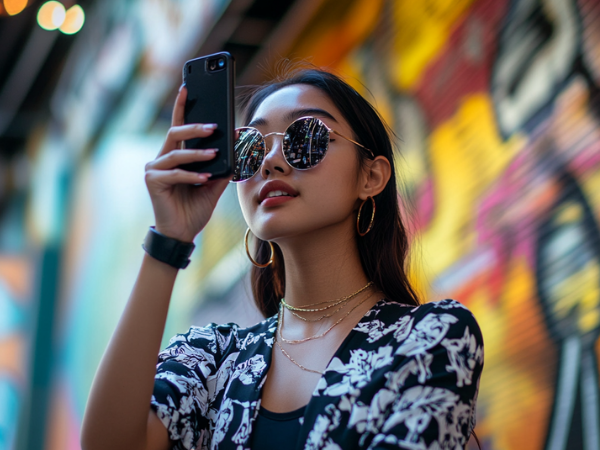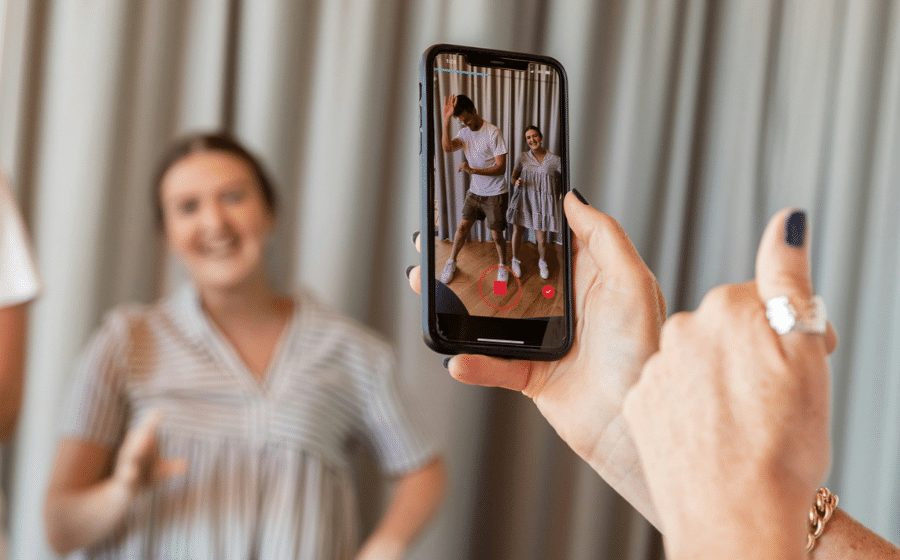We analyzed hundreds of thousands of Threads posts sent through Buffer to figure out which time slots got the most engagement.
It goes without saying that managing multiple social media platforms — whether for yourself or for a brand — can mean some serious multitasking. On any given day, you are:
Creating social media posts, repurposing existing content for socials, staying on top of trends across multiple platforms, reviewing your analytics for social media reporting, and so much more.
If you’re a creator or a small business owner managing your social media presence yourself, all of this is in addition to running your business.
Luckily, there are plenty of social media management tools to take some of the tasks off your to-do list — and make all that work a little more fun.
These are the 11 best ones — and plenty of alternatives to each tool, if you need them. Here's a quick summary:
- Buffer: Best for creators and small business owners
- Hootsuite: Best for mid-sized businesses practicing social listening
- Tailwind: Best for managing your Pinterest account
- SocialPilot: Best for social media agencies
- Zoho Social: Best for Zoho users
- Sprout Social: Best for using one tool for social media and influencer marketing
- Oktopost: Best for B2B companies
- Later: Best for agency support
- Socialinsider: Best for social media analytics
- Manychat: Best for chat automation
- Sprinklr: Best for enterprise organizations
Comparison table: The 11 best social media management tools
1. Buffer
Best social media management tool for creators and small businesses
Free plan/trial available: Yes. Free forever for up to 3 channels. All paid plans also have a 14-day free trial.
Price: Paid plans begin at $6/month/channel.
Favorite features:
- Store ideas, curated content, and any notes on the go using the Create space
- The Streaks feature helps you build and maintain a consistent posting habit
- The Start Page helps you ditch dry, boring, and generic link-in-bio tools and enables you to create a customizable landing page that’s authentically you
You knew Buffer was going to be at the top of this list, didn’t you? Sure, I’m biased because this is the Buffer blog, but I was a Buffer customer long before I was a writer on the team.
The thing I love most about Buffer is its simplicity. On the surface, Buffer looks like a simple tool. Add your accounts, start social media scheduling, and you’re A for away. But as great as that is, you’ve just scratched the surface of what Buffer can do.
- You can store the social media post ideas that pop up in the shower or while walking the dog because the mobile app is so smooth, accessible, and easy to use
- You can create beautiful, branded social media reports for stakeholders and get metrics tailored to you — no more questioning, “At which times do I get the most engagement? Which posts give me the most bang for my buck?”
- You can build your very own customized landing page in minutes. You’ll be surprised at how easy it is to create, seriously
Buffer is a pioneer in the industry for adding planning, scheduling, analytics, and more for new social media platforms.
With new social channels entering the chat rapidly (here’s looking at you, Threads and Bluesky), you’d want a social media management tool that’s flexible and quick to adapt.
It’s one of the only social media scheduling tools that has habit-building features like streaks to help post consistently.
And it’s continually coming up with handy features you’ll actually find helpful — like a template library to spark content ideas (especially when you’re short on time!). This feature is still in beta, but it’ll soon be rolled out to call customers.
Besides this, Buffer has all the basics checked: You can schedule posts easily, respond to comments, use its AI assistant to help speed up content creation, and collaborate with your team easily.
Buffer isn’t the best choice for you if you run a large enterprise company with a complex social media team. Its features are simple, straightforward, and powerful. But they are primarily geared toward creators and scrappy small businesses.
2 alternatives to Buffer
Loomly is also a good choice, especially if you’re a freelance social media manager. It has decent collaboration features and approval workflows, designed for someone managing multiple content calendars. But it’s not too complicated either (not a good fit for bigger social media agencies).
It has a free plan for up to three social media accounts, but allows scheduling only five posts per month. The pricing of its paid plans is not publicly available.
Metricool is also a decent alternative to Buffer. It can do all the basics of social media management, from post-scheduling to customized landing pages. Metricool has a free plan allowing you to publish up to 50 monthly posts. Paid plans begin at $22/month to schedule unlimited posts.
2. Hootsuite
Best social media management tool for mid-sized businesses practicing social listening
Free plan/trial available: No free plans. Paid plans have a free trial of 30 days.
Price: Pricing starts at €149/user/month for five social media channels.
Favorite features:
- An extensive social listening dashboard to help you monitor trending keywords, competitors, and brand mentions
- Granular control over the access you can provide to various team members — perfect for complex teams
- You can stack your social media reports against competitors & your industry in general to examine how you’re performing against these benchmarks
Hootsuite is well-known in the social media management world, and for good reason: I love its social listening feature. Since acquiring Talkwalker, it has become even more powerful.
You can choose your location and a topic to analyze, and the platform will give you an in-depth report about what people have been saying about that topic for the past week.
Hootsuite also has an excellent team management feature. You can create multiple sub-teams and minutely decide what level of access to give to your team members. An A+ feature if you’re a freelance social media manager or run a social media marketing agency.
The AI assistant can also do a lot — there are options to use copywriting formulas to write posts, repurpose existing posts, etc. But on testing, I found most outputs need a lot of refining.
I also don’t enjoy how complex the home dashboard is. It’s a bit overwhelming, and while feature-rich, Hootsuite definitely isn’t easy to use.
2 alternatives to Hootsuite
Keyhole is a solid Hootsuite alternative, specifically for social media listening. Its fundamental social media management features (like scheduling, storing ideas, creating graphics, and team collaboration) aren’t as strong as Hootsuite's, but the social listening feature is a tad bit better.
Better how? The dashboard is more user-friendly, and the audience insights are deeper. For example, you can also analyze whether the overall sentiment on a topic is positive, negative, or neutral. Keyhole doesn’t display its prices publicly.
Mention is also a great tool that has the best of both worlds from Keyhole and Hootsuite. Granted, its social listening features and analytics aren’t as good, but it’s decent enough. It also allows you to do all the basic social media management stuff like scheduling posts for X, LinkedIn, Instagram, and Facebook. Prices start at $49/month for up to four social media accounts. There’s no free plan.
3. Tailwind
Best social media management tool for managing your Pinterest account
Free plan/trial available: Free plan available for one account and five posts per month.
Price: Paid plans begin at $19.99/month for 400 posts per month on one account.
Favorite features:
- Schedule your pins at preset intervals
- A browser extension to create new pins from anywhere and save them to relevant boards
- SmartGuide monitors your Pinterest activity and alerts you on the recommended best practices to inform your Pinterest strategy
Sure, plenty of social media management software can help you schedule pins on Pinterest and manage your Pinterest account. But Tailwind was one of the first social media management apps specifically for Pinterest.
Its sole focus is on Pinterest, and it's an official Pinterest partner. So if you’re someone who’s looking to burrow down on this platform or grow your following on Pinterest exclusively, you’ll want to check out Tailwind.
The thing I find most useful? You can transform your photos into fantastic pin designs in one click. It’s like having your own, personalized Canva for Pinterest within your social media management tool.
Apart from this, you can schedule pins, add them to preset boards, and even spread them out at various intervals for maximum engagement. On testing, Tailwind was quite easy to use! The browser extension was a bit wonky and slowed me down, but that just might be my browser (Brave).
What I don’t like is that the free version of Tailwind is basically non-existent for anyone taking Pinterest marketing seriously. There are only five free posts per month. As veteran pinners will know, that’s just not enough, especially since Pinterest often thrives on quantity.
2 alternatives to Tailwind (for other social media channels)
Hypefury is the Tailwind of X. It has an inspiration panel to see other creators’ top tweets and has auto-comments to promote your newsletter, small business, or any other venture. There’s no better tool if you’re looking to grow on X.
That said, there's no free plan. Paid plans begin at €29/month. You can connect one X account and schedule posts for up to one month.
Shield is the alternative to Tailwind if you’re big on LinkedIn. Its unique selling point is its in-depth LinkedIn analytics — you can identify key themes in your content and which topics get the most likes from your audience. There’s no free plan. Paid plans begin at $15/month for one LinkedIn account.
4. SocialPilot
Best social media management tool for social media agencies
Free plan/trial available: No free plans. Free trial for all paid plans available for 14 days.
Price: Prices start at $30/month for one user and seven social media accounts. Only one user is included in this pricing. You need to upgrade your plan to add your team members.
Favorite features:
- Separate your dashboards for various clients and whitelabel them with customized colors, logos, etc., to give your customers a premium experience
- Simple approval process with easy, shareable, personalized links — requiring no sign-ups from your clients
- Auto-send various clients personalized and branded social media performance reports
SocialPilot screams agency. Even its pricing plans have “Agency” and “Agency+” options. Take the approval process: you can share direct personalized links (no sign-ups required) that compile everything your client needs to review on a single screen. The whole workflow is designed to be agency-first
The dashboard is also user-friendly if you manage multiple clients. You can have different sub-dashboards for various clients to keep their management separated from the rest. You can also whitelabel the platform to provide a customized experience to your clients.
Like Hootsuite, SocialPilot offers granular control over which team members can do what tasks, but it’s much more affordable and simpler to use.
I didn’t mention the basic features like scheduling, reporting features, and AI assistant, but SocialPilot has all the fundamentals, too.
2 alternatives to SocialPilot
Sendible is also designed for agencies, like SocialPilot. It has similar features like personalized dashboards, automated reports, and custom permissions. I’d say the user experience of Sendible is a tad bit better, but SocialPilot’s approval workflow is superior to Sendible.
Choose Sendible if you’re an agency that’s scaling fast. Its pricing plans are more accommodating toward bigger agencies. Similarly to SocialPilot, paid plans begin at $29/month for one user and six social media profiles. There’s no free plan.
Pallyy is a good alternative to SocialPilot if you want something simple. There’s no branded dashboards, but you can have customized colors. There’s a feedback overview that’s very straightforward to use, but can get cluttered if you manage a ton of clients. Pricing is also simple:
They have two plans — one is an unlimited plan and the other is a pay-as-you-go option. The latter is suitable for small agencies. Pricing starts at $25/month. Additional users cost $29/month.
5. Zoho Social
Best social media management tool for Zoho users
Free plan/trial available: No free plan. All paid plans have a 15-day free trial.
Price: Pricing starts at $15/month for one user and 11 social media channels.
Favorite features:
- Integration with other Zoho products like CRM and Desk for smooth management
- Build your own customized social media listening dashboard to track brand mentions, stay on top of trends, and more
- Automate your social media posts to repeat at a certain cadence to repost your content without any intervention
Zoho is a well-known name in the tech industry. It offers CRM solutions, emailing services, payroll processing, customer service software, and a whole lot of other products that knowledge workers use.
If you work in a company that already uses Zoho for various purposes, Zoho Social is a great social media management tool you should consider.
I’ll be honest: Zoho Social has nothing that sets it apart. Like Buffer’s known for its ease and flexibility, and Hootsuite for its feature-richness, Zoho Social doesn’t have any major unique selling point to make it stand out.
But that isn’t to say it can’t get the job done. If you need something simple to schedule your posts, analyze their performance, and create the occasional report, Zoho can do the job just fine.
Zoho Social is especially great because it integrates with Zoho Desk (its customer service software). Some businesses just get a lot of queries from customers on social media.
If you’re one of those, Zoho Social is great because you can integrate social media for customer service and social media for marketing seamlessly.
I’d recommend signing up for Zoho Social only if you’re already in the Zoho ecosystem and your social media marketing strategy is still developing.
Once you’ve fleshed out a roadmap, you might move toward a more specialized social media management software that caters to your unique needs. Or if you have the budget, you can add a separate tool in addition to Zoho Social.
2 alternatives to Zoho Social
HubSpot is the enterprise version of Zoho. It has a social media management software that can help you build campaigns, schedule social media posts, and link all your social media activity back to the HubSpot CRM.
Like Zoho Social, HubSpot’s social media management tool isn’t the best in the market — but it’s an easy choice if you already use HubSpot products.
There are many pricing plans, but the one that includes social media starts at $890/month for three users (and you have to pay annually). You can connect up to 50 social media accounts and schedule 10K posts per month.
For republishing top-performing content, you can also use MeetEdgar. Other than that, MeetEdgar also has basic social media management software features like scheduling posts, tracking performance, etc.
It costs $29.99/month for up to five social accounts. There’s no free plan.
6. Sprout Social
Best social media management tool for using one tool for social media marketing and influencer marketing
Free plan/trial available: No free plan available. All paid plans have a 30-day free trial.
Price: Pricing starts at $199/seat/month for five social media profiles. There are no monthly billing options.
Favorite features:
- Super aesthetic reports
- Influencer marketing software to help you run two strategies with one tool
- Employee advocacy feature to help you curate a feed specifically for your employees
Sprout Social acquired Tagger Media in 2023. So, now, not only can it help you with social media management tasks like scheduling posts, tracking brand mentions, and monitoring analytics, it can also help you find influencers and collaborate with them.
This is a major headache eliminated if you’re a social media manager responsible for running your social media marketing plan and your influencer marketing strategy.
That said, Sprout Social isn’t lackluster in the social media management department either. It has an AI assistant, like all popular social media management tools, and its reports are beautiful. You can use various interactive charts and graphs to visualize information — and it’s just a treat to look at.
All that said, Sprout Social is definitely not for the creator or small business. It comes with a hefty price tag and the paid plans don’t include the cost of integrating the influencer marketing software. Welp.
If you’re a big company with the big bucks, Sprout Social might be worth your money. But if you’re a small business with a shoestring budget, choose two different tools for your social media and influencer marketing strategy not to burn a hole in your pocket.
2 alternatives to Sprout Social
Meltwater is multiple software rolled into one. It has a media relations tool, social listening dashboard, social media management, influencer marketing software, and a whole lot more.
If you prefer having one tool for multiple use cases, Meltwater is a fine choice.
The pricing isn’t publicly available.
Brandwatch is another software that has four tools: social media management software, influencer marketing, consumer intelligence, and media intelligence. It has an influencer database of 30 million creators and the CRM is quite easy to use.
Pricing for this tool is also not publicly available.
7: Oktopost
Best social media management tool for B2B companies
Free plan/trial available: Pricing not publicly available.
Price: Pricing not publicly available.
Favorite features:
- Premade dashboards by B2B social media experts to help you track important metrics
- Each post is assigned to a campaign for accurate social media reporting
- Tracks buyer journeys
Oktopost specializes in social media management for B2B companies. Every scheduled post is assigned to a campaign for better reporting, and UTM parameters are added to every link you share on social media.
The analytics also look a tad bit different than your usual social media management software: Oktopost tracks the buyer journey to understand how your social media campaigns are impacting revenue.
The B2B social media experts at Oktopost also recommend premade dashboards that you should be monitoring to analyze your social performance.
A major downside, however, is that you can’t get a feel for the product because there’s no free trial or publicly available pricing.
2 alternatives to Oktopost
Content Studio is also quite B2B oriented. You can curate existing content from X, YouTube, and the web. There’s also an in-built RSS feed reader so you can control what you see on your social profiles’ news feed. You can even find influencers on X, YouTube, and Instagram.
You can also schedule blogs on Medium, WordPress, Webflow, etc. along with social media management. There’s no free plan, though. Paid plans begin at $29/month for five social media accounts and one user.
There’s nothing that makes Missinglettr specifically useful for B2B companies, but it has a ‘drip social media campaigns’ feature that’ll be quite useful for any B2B organization.
You can connect your company blog, Medium, or YouTube channel, and Missinglettr will automatically extract the most valuable quotes and images to post about it on social media.
You can also curate content like on Content Studio. Pricing begins at $15/month three social media profiles. There are no free plans.
8. Later
Best social media management tool for getting agency support
Free plan/trial available: No free plan available. All paid plans have a free trial of 14 days.
Price: Pricing starts at $25/month for nine social media profiles and one user. You can schedule up to 30 posts per profile.
Favorite features:
- Social management, influencer marketing, social listening, and agency support all rolled into one
- Store images, posts, and any content you plan to use in their Media Library
- Automatic creator attribution for any post you import from Instagram
Later is the complete solution for people who need agency support, along with the features of social media management apps. Its social media features aren’t revolutionary — you can schedule posts, create a custom link-in-bio page, and measure your analytics, but that’s pretty much it.
What makes Later stand out is its agency services. Their team handles your organic social media marketing from A-Z — they help you form your strategy and execute it. Later’s approach is to combine your social content with creator partnerships and even social media advertising.
They also take over managing relationships with your audience — the agency will respond to comments and DMs on your behalf.
If you’re looking to outsource your social marketing efforts, Later might be the perfect choice. You can just oversee everything instead of doing it yourself.
But remember agency services aren’t included in their standard price. It will come at an additional cost and it might not be the most affordable option.
1 alternative to Later
SocialBee is also a tool that provides agency services in addition to social management. Their service is called ConciergeBee, and they also provide content marketing services in addition to the usual social media tasks.
They don’t have community management features for social platforms other than Instagram and LinkedIn. They don’t have a free plan for their tool. Paid plans begin at $29/month for five social profiles and one user.
9. Socialinsider
Best social media management tool for social media analytics
Free plan/trial available: No free plans. All paid plans have a free trial of 14 days.
Price: Pricing starts at $99/month for up to 20 social media accounts.
Favorite features:
- You can compare your performance against competitors on KPIs like engagement rate and follower growth
- Discover the performance of your various content pillars to monitor which ones resonate the most with your audience
- Easy-to-use dashboard that allows you to understand your social media performance easily
Socialinsider is an analytics tool that provides in-depth reporting on your social posts. In one dashboard, you can monitor engagement, reach, impressions, follower growth, and more across all your social platforms.
This tool doesn’t have many traditional features like the ability to schedule posts. It’s a dedicated analytics tool. Socialinsider is the perfect choice for someone who needs more detailed insights for their social channels.
You can use it in conjunction with some other tools on this list or use it as a standalone tool if you’re fine with manual posting and social engagement.
2 alternatives to Socialinsider
Rival IQ is another great choice if you’re looking for a dedicated analytics tool to help you dissect your social posts. Rival IQ is more suited to agencies because you can add multiple companies to its dashboard.
Pricing starts at $239/month for 10 companies. All paid plans have a 14-day free trial. There’s no free plan.
Siftsy also deserves a shout if you want to analyze your social media comments. All you have to do is upload a CSV file of the URL of your social media posts, and the tool will analyze the comments on it. The pricing for this tool is not publicly available.
10. Manychat
Best social media management tool for chat automation
Free plan/trial available: The free plan has limited features, like a limit on the number of ‘contacts’ you can engage with.
Price: Pricing starts at $15/month and increases with the number of contacts.
Favorite features:
- Template gallery to create customized DM campaigns
- Reply to social DMs 24/7 with chat automation
- AI assistant to help set up chat workflow
Manychat, like Socialinsider, doesn’t have the classic social management features. But it’s an excellent add-on for social marketing automation.
Have you ever seen those “comment for link” posts where the creator automatically sends the link to a product or info about a topic once you comment something? That’s what Manychat helps you automate!
You can use this tool to communicate with leads, follow up on time, and ensure you respond to every message you receive on social media.
The only con is that Manychat only works with Instagram, Facebook, and WhatsApp. If you have your primary social accounts on other channels — like X or LinkedIn — you can’t integrate it with this tool.
That said, Manychat’s chat automation for TikTok is in beta, so it’s possible they might add more platforms in the future.
2 alternatives to Manychat
Linkdm is another chat automation tool but it’s exclusively for Instagram. You can do a lot with it if Instagram is your primary channel, but if you plan to expand your presence in the future, Manychat is a better tool. Linkdm’s UI and UX is also a little clunky.
There’s a free plan with a 1,000 DMs/month limit. Paid plans begin at $19/month.
Spurnow also allows you to build AI customer service using your knowledge base. Its CRM is quite comprehensive, and you have excellent customization options. There are no free plans. Paid plans have 7-day free trials and begin at $79/month.
11. Sprinklr
Best social media management tool for enterprise organizations
Free plan/trial available: Not publicly available.
Price: Not publicly available.
Favorite features:
- Persona apps to simplify navigation for social media managers — they only see metrics they need to
- Customize content to fit diverse audiences
- AI-powered image detection capabilities
Sprinklr is a customer experience management tool with social management features. It’s an enterprise-grade software, meeting all the governance requirements of companies of that size.
Apart from social media, Sprinklr also has social listening features, competitive benchmarking, social advertising, and conversational commerce features.
If you’re a large company, it’s also important you use a tool like Sprinklr because it integrates with all the tools in your tech stack, providing you a unified view of all your efforts in one dashboard.
The learning curve in such tools is long — in addition to the monetary investment — so keep that in mind before you finalize an enterprise tool.
1 alternative to Sprinklr
Khoros is an excellent alternative to Sprinklr if you need a community tool to merge with your social management. It has all the listening, employee advocacy features like Sprinklr, too.
What should you look for in social media management apps?
The problem with choosing social media management platforms is:
- The market is saturated with plenty of social media tools
- Most social media management software has pretty much the same core features
- Finding their differentiators among all the features is time-consuming and can take some trial-and-error
In this scenario, choosing the right social media management software can become a difficult task. How do you know which is the right one for you? Here are five questions you should ask yourself while evaluating social media tools:
1. Does the social media management platform connect with all major social networks?
Your social media efforts might be focused on one social media platform right now, but that’s bound to change as you grow.
Your target audience is present in multiple social networks and you’ll likely expand into multiple social media channels as you scale.
For starters, you can choose specialized social media management apps focusing on just one network, but eventually you might need a platform that connects with all major networks.
2. Does the social management tool have strong reporting features?
One of the core aspects of a well-made social media strategy is having comprehensive analytics. A social media presence in a silo is ineffective.
You need detailed analytics to prove social media ROI. This is true for everyone — social media managers, agencies, freelancers. In all social media management tools, examine the performance measurement tools thoroughly. They should go beyond measuring the basic analytics.
Does it calculate the social media metrics you need? Can you measure audience engagement accurately? Are all customer interactions accounted for? Are the reporting tools providing in-depth analytics for multiple platforms?
3. Does the social media management software have strong collaboration tools?
If you’re a creator operating solo, you might not need collaboration features for your marketing efforts. But social media managers and agencies need strong team collaboration tools to work together.
Nail down the specifics of what you need to work together seamlessly. Do you need granular level permission control? Or a smooth social media workflow to onboard clients?
Almost all social media management tools have plans that allow for team collaboration where you can add multiple team members. But there are differences in a few features (like permission levels). Check for those.
4. Will the price of the social media management tool stay in budget as you scale?
Maybe you choose the tool that the world’s biggest companies use. But what’s the point if it goes out of pocket as soon as you grow?
Don’t just look at the current price of social media management tools. Calculate the cost when you want to connect multiple accounts.
The best social media management tool will be able to scale with you — whether that’s in adding team members or adding multiple social media profiles.
5. Does the social media tool have specialized features you need?
Despite the competition, most social media management tools have few features especially designed for their target audience.
Buffer has a DIY landing page builder for its creators and Sprout Social has an influencer marketing tool, for instance. Many tools also help you generate ideas, choose from an extensive media library, or provide an easy to use visual content calendar.
Articles like this one will help you understand the few features that make a social media management platform different from the rest.
After your initial analysis, you’ll be left with a handful of social media management tools that fit your budget and your needs.
Luckily, most tools have long free trials that you can use to get a feel for the software before committing to a monthly or yearly subscription. Yes, testing all shortlisted social media software within free trials is a bit tedious. But it’ll help you make the best long-term choice.
Did we miss adding your favorite social management tool to this list? Tell us in the comments which software you love and why!
